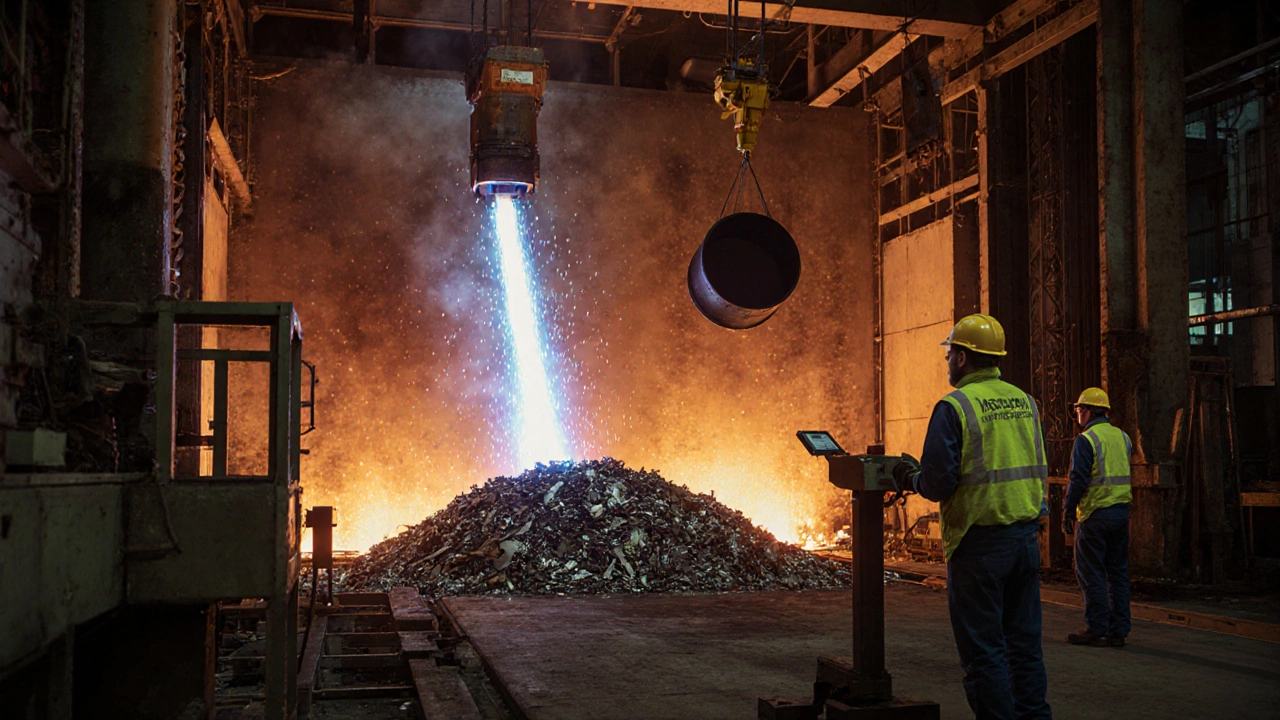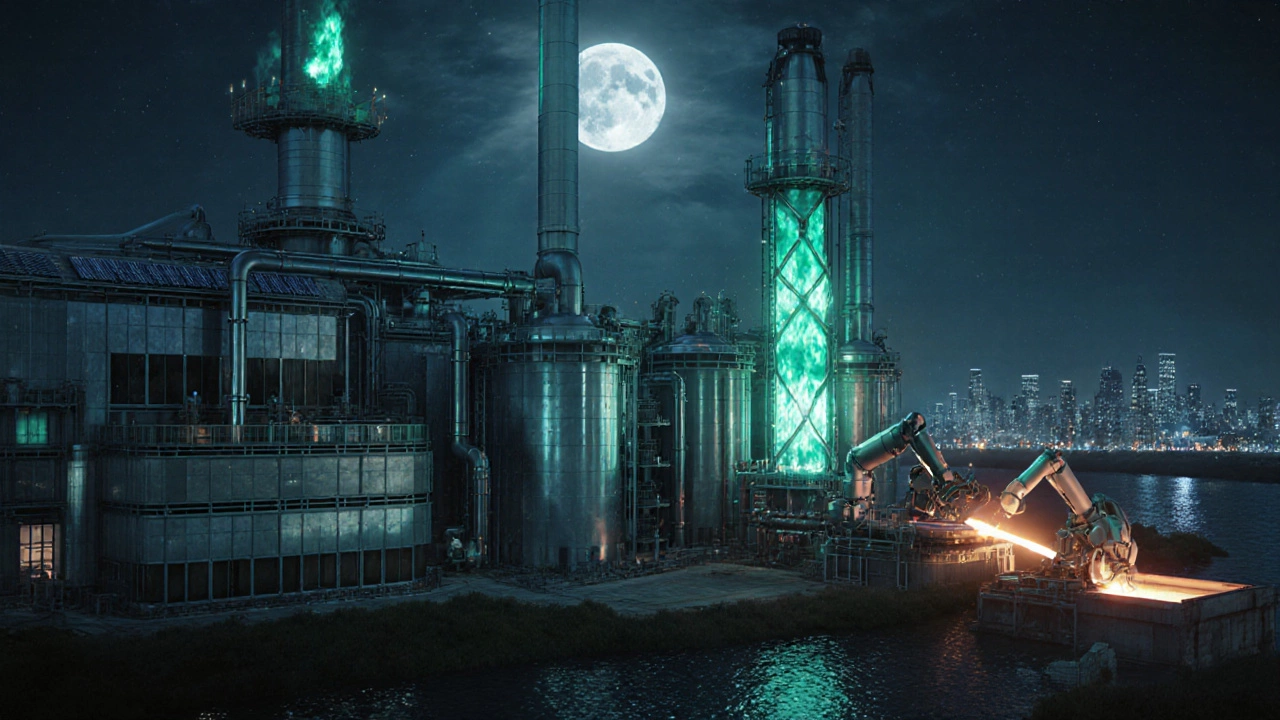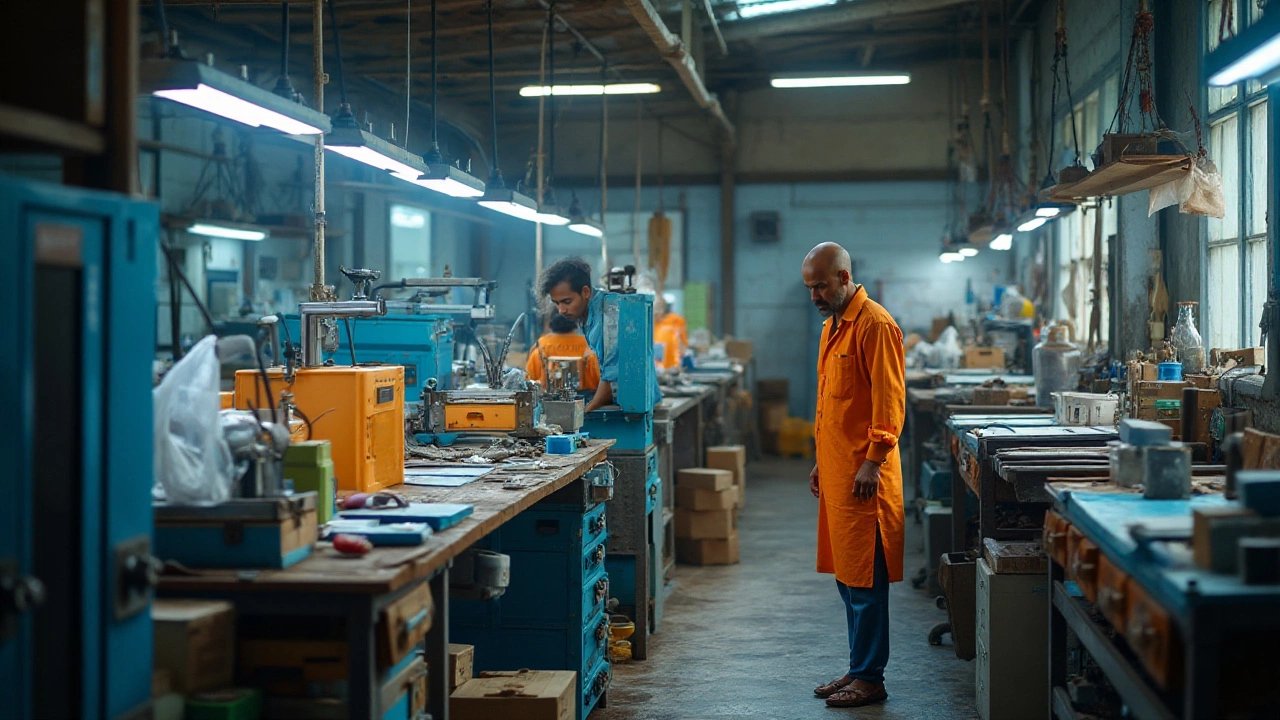US Steel Mills in 2025: Which Ones Are Still Operating?

US Steel Mills 2025: Facility Explorer
| Mill Name | Owner | Type | Annual Capacity (Mt) | Region |
|---|
Total Active Mills
30
EAF Percentage
70%
The answer to your question about US steel mills is that a handful are still churning out metal, but the landscape looks very different from a few decades ago. In 2025 the United States has roughly 30 operating steel facilities, down from more than 70 in the early 2000s. Most of the survivors are modern electric‑arc furnace (EAF) plants run by nimble specialty producers, while only a few massive integrated mills remain.
Key Takeaways
- Only about 30 steel mills are active in the U.S. as of 2025.
- Integrated steel mills now account for less than 20% of total capacity.
- EAF operators such as Nucor and Steel Dynamics dominate new‑build capacity.
- Recent closures are driven by global overcapacity, carbon‑regulation pressures, and shifting demand.
- The next decade will see more green‑steel projects and possible consolidation.
Current Landscape of US Steel Mills (2025)
US steel mills are facilities that melt iron and alloy it into usable steel products. According to the American Iron and Steel Institute (AISI), the United States produced 73 million metric tons of steel in 2024, a modest rise from the pandemic dip. Of the roughly 30 plants still operating, capacity is split roughly 70% EAF and 30% integrated.
Types of Mills Still Operating
Integrated steel mills are large, capital‑intensive complexes that start from raw iron ore, coke, and limestone, using blast furnaces and basic oxygen furnaces (BOF). They typically produce flat‑rolled and structural steel for construction and automotive sectors. In 2025 only six integrated sites remain, all located in the Great Lakes region.
Electric arc furnace (EAF) plants recycle scrap metal or use direct reduced iron (DRI) as feedstock. They are quicker to start up, emit less CO₂ per ton, and can switch production runs fast. Over 20 EAF facilities are active, spread across the South, Midwest, and a few in the West.

Major Companies Operating US Steel Mills
The industry is now dominated by a handful of diversified steelmakers. Below is a snapshot of the biggest owners and the mills they run.
| Mill Name | Owner | Type | Annual Capacity (Mt) |
|---|---|---|---|
| Gary Works | U.S. Steel | Integrated | 4.5 |
| Bethlehem Steel (Portsmouth) | ArcelorMittal | Integrated | 3.2 |
| Altoona | Nucor | EAF | 2.1 |
| Texas Mill (Austin) | Steel Dynamics | EAF | 1.8 |
| Guthrie (Virginia) | Nucor | EAF | 1.5 |
| MetalCorp (Tennessee) | Steel Dynamics | EAF | 1.3 |
These six mills alone account for roughly 25% of the nation’s total steel output. The rest of the capacity is spread across smaller regional EAF facilities, many owned by the same three majors.
Why Mill Closures Have Accelerated
Since the early 2010s, the U.S. steel sector has been shedding plants at a rapid pace. The most common culprits are:
- Global overcapacity: China’s massive output has kept world prices low, making many U.S. plants unprofitable.
- Carbon regulation: New EPA rules and state‑level climate policies force older, coal‑fired integrated mills to invest billions in carbon‑capture or shut down.
- Demand shifts: Automotive manufacturers are moving toward lightweight aluminum and high‑strength steels that require specialized production lines.
- Labor costs: Unionized plants in the Midwest carry higher wage bills than newer southern facilities.
Since 2015, there have been 15 major mill closures. Notable examples include the Bethlehem Steel plant in Pennsylvania (2019) and the US Steel Great Lakes Works (2021). Most of the closed sites were integrated operations that could not pivot to scrap‑based production.
Regional Distribution of the Remaining Mills
Geography still matters. The Midwest retains the legacy integrated hubs-Gary, Indiana; Pittsburgh, Pennsylvania; and Cleveland, Ohio-while the Southeast (Georgia, Alabama, Texas) hosts a growing cluster of EAF plants, taking advantage of lower labor costs and proximity to scrap supplies.
Mapping the 30 active facilities shows a clear north‑south gradient: the north concentrates in traditional iron‑ore regions, the south thrives on recycling‑driven steelmaking.

Future Outlook: Green Steel and Consolidation
Looking ahead, three trends will shape whether more mills stay open or new ones appear:
- Hydrogen‑based steelmaking: Companies like Nucor are piloting hydrogen‑powered EAFs that could slash CO₂ emissions by up to 90%.
- Strategic investments: The Department of Energy’s $2billion “Clean Steel” initiative promises grants for low‑carbon upgrades.
- Consolidation: Smaller owners may merge with majors to achieve economies of scale, especially as financing for green retrofits becomes scarce.
If these forces align, the United States could see a modest rebound in capacity, but probably still far below the 70‑plus plants of the early 2000s.
Quick Checklist for Readers Wanting Up‑to‑Date Info
- Check the AISI annual report for the latest plant count.
- Visit each major owner’s investor relations page for real‑time capacity updates.
- Monitor EPA’s Carbon Pollution Standards for any new compliance deadlines.
- Follow industry news sites like Metal Bulletin for announced closures or start‑ups.
Frequently Asked Questions
How many steel mills are still operating in the United States?
As of 2025, about 30 steel mills remain in operation across the country, with roughly 20 of them being electric‑arc furnace facilities.
Which regions host the most steel production today?
The Midwest still houses the few remaining integrated mills, while the Southeast (Georgia, Alabama, Texas) leads in new EAF plants due to cheaper labor and abundant scrap supplies.
Why have so many US steel mills closed in the last decade?
Key drivers include global overcapacity, stricter carbon emissions rules, shifting demand toward lighter alloys, and higher labor costs at older, unionized facilities.
What is the difference between an integrated steel mill and an EAF plant?
Integrated mills start with iron ore and use blast furnaces and basic oxygen furnaces to produce steel, while EAF plants melt scrap metal or direct‑reduced iron using electric arcs, resulting in lower capital costs and emissions.
Will the US steel industry grow in the next five years?
Growth is expected to be modest. Investments in low‑carbon technologies and possible consolidation could add capacity, but overall production will likely stay below historic peaks.





